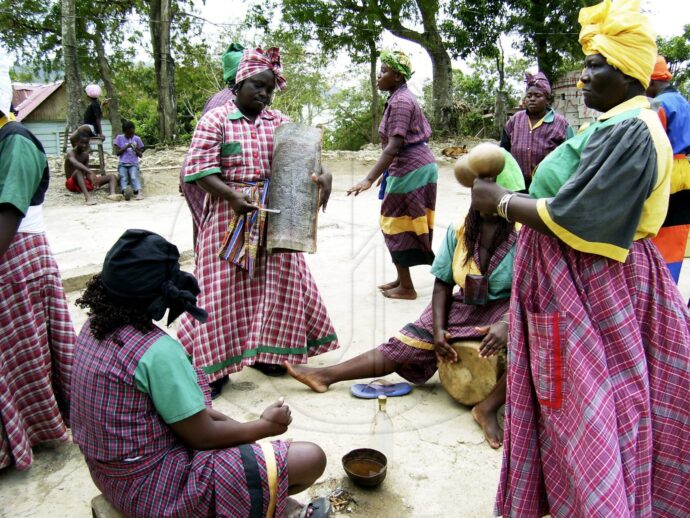There are many forms of cultural and spiritual expression. Kumina is quite a unique one. It was brought to the island of Jamaica in the 1840’s to 1860’s by both enslaved and indentured laborers. They are known as the Bkongo people of the Congo region of West Central Africa. This was the post emancipation period and the new arrivals settled mostly in St. Thomas in the eastern part of the island. Kumina is described as an “indigenous Jamaican cultural form comprising religion, dance and music based on African traditions”. It is also described as “an art form combining, dancing, singing and drumming”. Although kumina is usually associated with funerals and wakes, they are also performed at anniversaries, births and thanksgivings. There are other purposes as well. Since kumina involves communication with the ancestors, it is sometimes used when help is needed to win a court case or for winning a lover. The practice is also linked to healing as ceremonies utilize the songs, the drums, and even animal sacrifice, with the intent to summon spirits to heal the sick person. Drums play an integral part of this dance ritual. The drummers sit on the body of he drum using both hands and feet to create the sound. Dancers circle in a counterclockwise pattern around the drummers. The tempo of the drums dictate the pace and rhythm of the dancers’ movements. It is said that the drumming “represents the spirits of the Gods”. Now the large low pitched drums play the rhythm with emphasis on the first and third beats. This is similar to a steady baseline or the “Kbandu drum” as it is commonly known. “Playing Cast” or the lead drummer plays the higher pitched drum. He is well respected and must be knowlegeable in playing a wide selection of songs to “control the many spirits and deities”. Scrapers, which are kitchen graters scraped by a metal fork held horizontally, provide more instrumentation. Shakas are made from hollowed dried coconuts with gravel inside and a handle attached. Catta sticks are used to knock against the sides of the drums behind the drummers while they play. The moves and motions of the dance, which includes dips, spins and breaks are described as “exclusively African style”. The art form was popularized by the Seaforth Dust to Dawn Kumina Group in St. Thomas and The Jamaican Cultural Development Commission. The hypnotic sounds of kumina drums is “not easy to imitate and very hard to duplicate”. Kumina is a “ritualistic medium through which our African ancestors are celebrated and appeased”.





